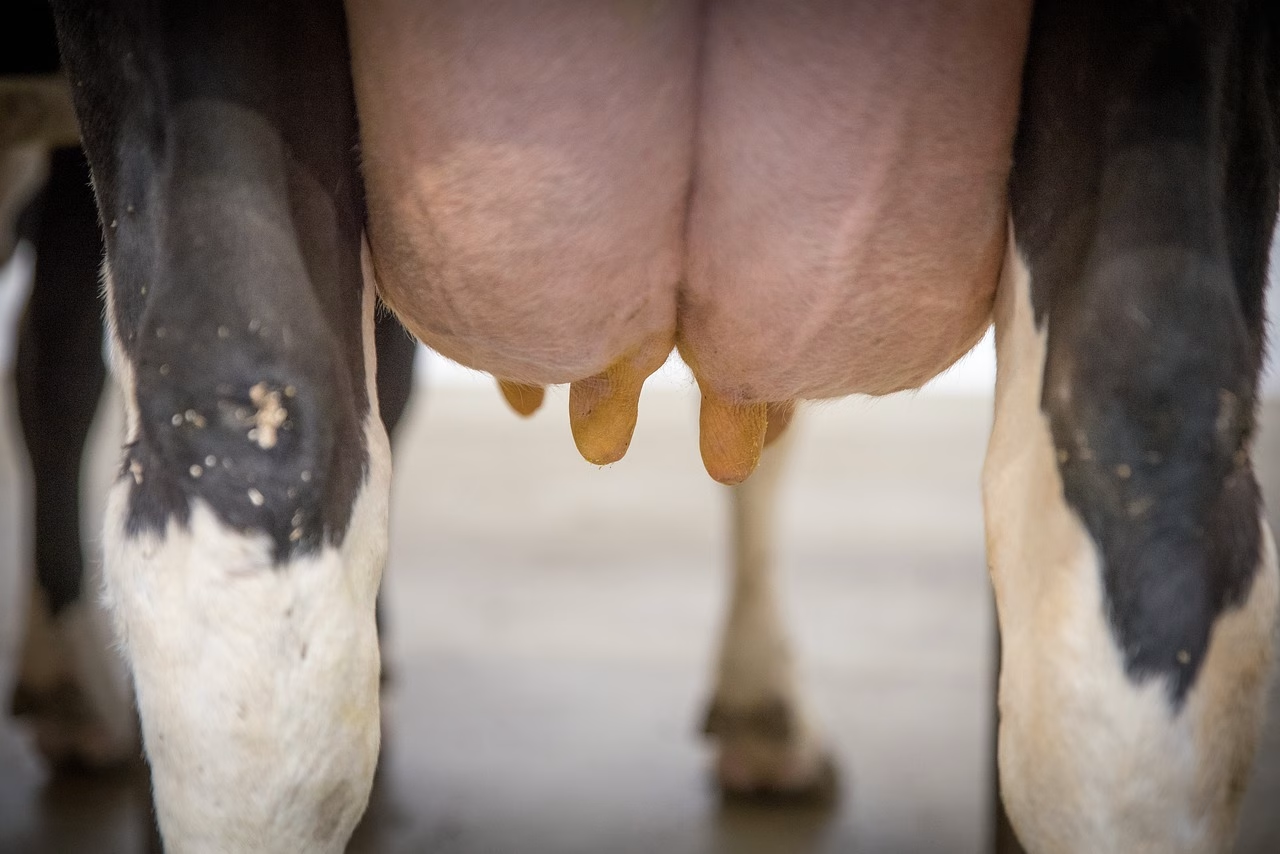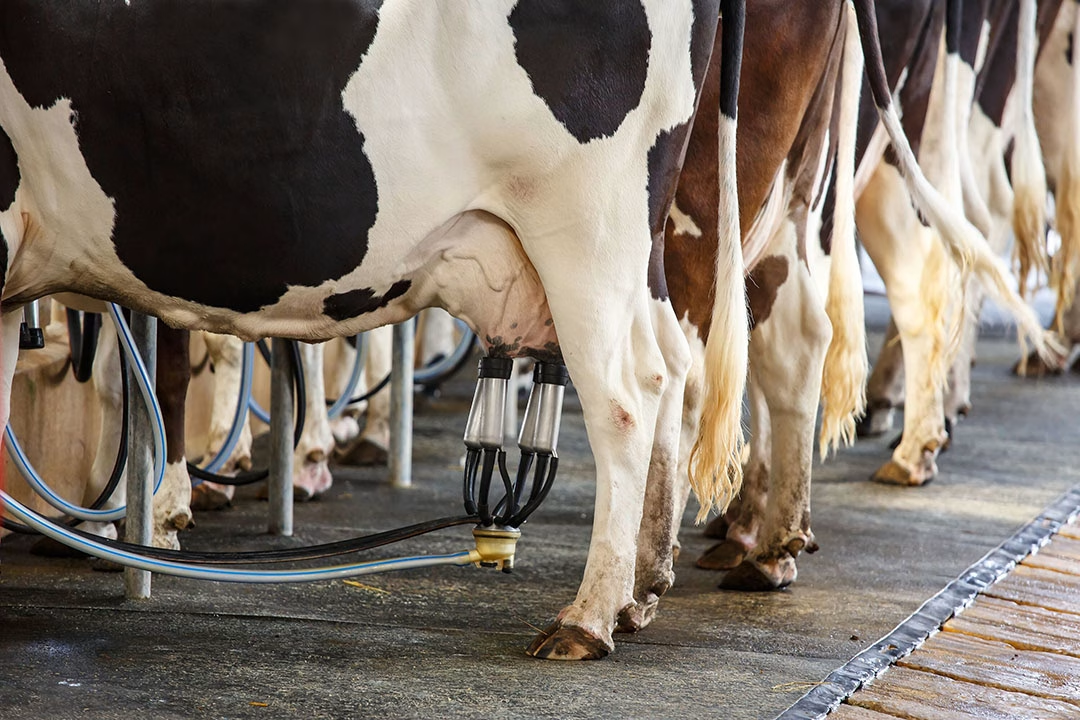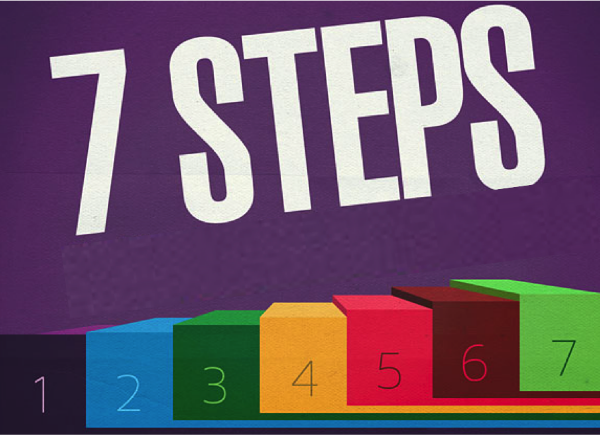Udder health impacts dairy profits! Discover small changes that prevent mastitis, cut costs, and boost milk quality.

If you’re running a dairy operation, you know that healthy udders are the foundation of your business. They’re the difference between thriving and just surviving. But here’s the thing about udder health – it’s not usually one big problem that tanks your production; it’s often those small, overlooked details that slowly chip away at your bottom line.
The Real Cost of Mastitis on Your Farm
Let’s talk dollars and cents. When mastitis strikes your herd, your wallet feels it immediately. According to USDA research, each clinical care costs approximately $444. Some estimates push that figure up to $600 per case.
Think about what that means across your herd:
- Milk down the drain: This is not just from discarded milk during treatment but also from the production losses that can persist long after the infection clears. This accounts for up to 80% of your total mastitis-related losses.
- Treatment expenses: Antibiotics, vet calls, extra labor hours spent treating cows instead of handling other farm tasks.
- Premature culling: When chronic cases force you to move good genetics out of your herd before their time.
- Quality penalties: Those SCC premiums disappear when cell counts climb.
When you add it all up, mastitis costs the global dairy industry between $19.7 billion and $32 billion annually. Here in the U.S., subclinical mastitis alone drains more than $1 billion from producers’ pockets each year.
Back to Basics: Building Your Udder Health Foundation
The National Mastitis Council’s 10-point plan isn’t just another set of recommendations – it’s the playbook that successful dairy farmers have relied on for decades. Here’s what makes it work:
Your Barn Environment: First Line of Defense
Your cows spend 12-14 hours daily lying down, and what they’re lying in matters tremendously. University of Minnesota research has established connections between bedding bacteria counts and udder health.
Think about it – a cow’s teats are in direct contact with that bedding for half the day. Keep it clean and dry, and you’ve won half the battle. For transition cows primarily, aim for less than 100% stall capacity with at least 30 inches of feed bunk space per cow. Remember: moisture is the enemy. It turns bedding into a bacterial playground.
Milking Time: When Details Matter Most
Your milking routine either builds or breaks your health. The difference between good and great often comes down to consistency and attention to detail:
- Keep cows calm during milking – stress impacts milk letdown and increases the risk of incomplete milking
- Forestrip to catch clinical cases early and stimulate milk letdown
- Pre-dip thoroughly and allow proper contact time (30 seconds minimum)
- Dry teats completely with individual towels – milking wet teats is causing trouble
- Attach units within that 60-120 second window after stimulation
- Ensure proper alignment to prevent liner slips and vacuum damage
- Apply post-dip immediately after unit removal, covering the entire teat
Post-dipping alone can cut new infection rates by more than 50%. That’s a massive return on a small investment of time and product.
Equipment Check: Is Your Milking System Helping or Hurting?
Even the best milking routine can’t overcome equipment problems. Regular maintenance isn’t just about preventing breakdowns but protecting udder health. Replace inflations (liners) on schedule, check vacuum levels regularly, and have your system evaluated by a qualified technician at least annually.
Modern Tools That Make a Difference
Today’s dairy farmer has access to technology that previous generations could only dream about. Here’s what’s worth your attention:
Better Milking Components for Healthier Teats
Milkrite | InterPuls has developed a triangular liner that distributes pressure more evenly during milking. The design aims to improve teat condition by reducing congestion and hyperkeratosis while minimizing liner slips.
Their MIPulse diagnostic tool helps you avoid equipment issues by monitoring milking parameters and alerting you to problems before they impact udder health.
Early Warning Systems: Catching Problems Before They Explode
The smaXtec bolus system continuously monitors your cows from the inside out. Once placed in the reticulum, it tracks:
- Inner body temperature with precision down to ±0.018°F
- Rumination patterns
- Movement activity
- Drinking behavior
What makes this valuable? The system can detect developing mastitis up to 4 days before you see clinical signs. That’s the difference between a mild case requiring minimal intervention and a full-blown clinical infection. Users report reducing antibiotic use by up to 70% through earlier detection and intervention.
For robotic milking systems, Lely’s MQC-C technology performs automated cell count measurements during milking, giving you daily insights into each cow’s udder health. While not replacing laboratory testing, it provides more frequent monitoring that helps catch rising SCC trends early.
Nutritional Support When Cows Need It Most
Feed additives like Phibro’s OmniGen products are designed to support immune function, potentially helping cows fight off mastitis-causing pathogens. Research collaborations with major U.S. universities have shown promising results, including lower somatic cell counts and fewer health events.
An economic analysis based on University of Florida research estimated a 2.5:1 return on investment ($79 benefit per cow minus $32 feed cost), attributed to increased milk production, better health, and improved reproduction.
Your Team: The Most Important Technology on Your Farm
You can have the best equipment, facilities, and top-notch genetics, but without a well-trained team, udder health will suffer. Michigan State University research found that investing in employee training yields remarkable improvements:
- Cows receiving inadequate preparation time dropped from 41% to 16%
- Teat disinfectant coverage improved significantly
- Pre-dip contact time increased
- Average milking time decreased, improving parlor efficiency
The key insight? Employees who understand why procedures matter – not just what to do – are likelier to follow protocols consistently. As Dr. Zelmar Rodriguez from MSU puts it, training farm workers results in more excellent knowledge, satisfaction, and willingness to adhere to the milking protocol, leading directly to improved milk quality and udder health.
Creating Your Farm-Specific Action Plan
No two dairy operations are identical, which means your udder health strategy needs to be tailored to your specific situation. Here’s how to build an effective plan:
Know Your Enemy
The University of Minnesota Extension recommends a three-step approach:
- Identify your predominant pathogens through milk cultures. Are you dealing with contagious organisms like Staph. aureus or environmental bugs like E. coli? The answer dramatically changes your control strategy.
- Figure out why infections are happening by analyzing patterns in your records. Are fresh cows getting sick? Mid-lactation animals? Specific pens? Certain seasons?
- Create a targeted plan that addresses your specific challenges. Prioritize interventions with the highest potential impact.
Build Your Advisory Team
Don’t go it alone. Assemble a team that includes your veterinarian, key employees, nutritionist, and equipment technicians. Meet regularly to review data, discuss challenges, and adjust strategies. This team approach brings diverse expertise to the table and helps ensure accountability.
Monitor, Evaluate, Adapt
Udder health management isn’t a “set it and forget it” proposition. It requires ongoing attention:
- Track key metrics like individual cow SCC, bulk tank SCC, clinical mastitis rates, and culture results
- Evaluate whether your interventions are working
- Be willing to adjust your approach based on what the data tells you
Small Changes, Big Returns
Improving udder health doesn’t always require massive investments or complete system overhauls. Often, it’s about consistency in the basics and attention to detail:
- Are your towels spotless and dry?
- Is every teat getting full coverage with pre- and post-dip?
- Are you catching clinical cases at the earliest possible stage?
- Is your bedding management as good on busy days as on regular days?
These small details can make a tremendous difference in your herd’s udder health, milk quality, and, ultimately, your profitability. The best part? Many of these improvements cost little or nothing to implement – they require commitment and consistency.
Remember, healthy udders don’t happen by accident. They result from intentional management, well-trained teams, and a relentless focus on the most critical details. Start making those small changes today, and watch your milk quality improve, your treatment costs drop, and your bottom line grow.
Key Takeaways:
- Mastitis costs $177–$586/cow/year via reduced production, treatments, and culling.
- NMC’s 10-point plan is critical: focus on hygiene, milking routines, and dry cow care.
- Tech tools matter: Sensors detect mastitis 4 days early; immune supplements (OmniGen) yield 2.5:1 ROI.
- Train your team: Proper milking routines cut clinical cases by 50% and improve SCC.
- Customize solutions: Tailor strategies to farm size, pathogens, and resources for lasting results.
Executive Summary:
Mastitis remains the costliest challenge for U.S. dairy farmers, with losses averaging $444 per clinical case and up to $32 billion globally. The National Mastitis Council’s 10-point plan forms the backbone of prevention, emphasizing hygiene, milking protocols, and dry cow management. Modern tools like immune-boosting feed additives, sensor boluses for early detection, and precision milking technology amplify results, while employee training ensures consistency. Success hinges on integrating data-driven strategies, tailored farm protocols, and proactive monitoring. By prioritizing prevention over treatment, farmers can slash antibiotic use, improve animal welfare, and protect profits.
Learn more:
- Proven Strategies to Boost Milk Production and Maintain Udder Health
Explores nutrition, milking protocols, and hygiene practices to optimize milk yield while preventing mastitis, aligning with the economic focus of udder health. - Unlocking the Benefits: How Milk Quality and Udder Health Training Boost Dairy Production
Highlights the critical role of employee training in mastitis prevention, mirroring the emphasis on human factors in udder health programs. - Boosting Udder Health: The Role of Microbial Bedding Conditioner in Maintaining Superior Bedding Quality
Focuses on environmental management innovations, directly supporting the NMC’s emphasis on clean, dry housing to reduce pathogen exposure.
 Join the Revolution!
Join the Revolution!
Join over 30,000 successful dairy professionals who rely on Bullvine Daily for their competitive edge. Delivered directly to your inbox each week, our exclusive industry insights help you make smarter decisions while saving precious hours every week. Never miss critical updates on milk production trends, breakthrough technologies, and profit-boosting strategies that top producers are already implementing. Subscribe now to transform your dairy operation’s efficiency and profitability—your future success is just one click away.







 Join the Revolution!
Join the Revolution!






